| 08:30 to 09:00 |
Registration, Tea/Coffee & Exhibition
|
| 09:00 to 09:10 |
President's Introduction
Abid Faqir 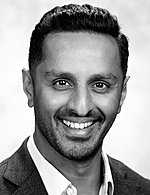 Abid Faqir graduated from the Glasgow Dental School before undertaking his Diploma of Membership of the Faculty of Dental Surgery in Edinburgh and a Masters Degree at Glasgow University. He has further gained a Diploma in Implant Dentistry from the Royal College of Edinburgh. He has had extensive training both in the UK and overseas in the field of implantology. Abid Faqir graduated from the Glasgow Dental School before undertaking his Diploma of Membership of the Faculty of Dental Surgery in Edinburgh and a Masters Degree at Glasgow University. He has further gained a Diploma in Implant Dentistry from the Royal College of Edinburgh. He has had extensive training both in the UK and overseas in the field of implantology.
Abid limits his practice to the treatment and the management of complex cases, including digital planning. He has a particular interest in immediate loading and soft tissue grafting.
Abid is currently the President of the Association of Dental Implantology. He has also been appointed in the past to the editorial board for the publication Implant Dentistry and as a committee member of British Society of Oral Implantology.
Outside dentistry he has served on the board as a trustee for the Riverside Museum Appeal and is currently a board member of the Glasgow Children’s Charity.
Qualifications: BDS(Glasg) MFDS RCS(Edin) MSc(MedSci) Dip Imp Dent (RCS Edin) |
| 09:10 to 09:35 |
Bio-Corrosion Of The Dental Implant Surface - Should We Be Concerned? Bio-chemical activity at the dental implant-tissue interface is dynamic, complex and as yet, not fully understood. Our inability to treat peri-implantitis predictably and with full remedial confidence demonstrates this. Material disintegration and metal and other ionic release into the tissues is reported to have the potential to influence the development and pathway of peri-implantitis. Different implant surfaces present higher risks of contributing to inflammatory changes that can lead to the disturbance of a stable, established equilibrium that preserves and maintains a healthy, symbiotic environment and ultimately present a threat to osseointegration.
What is bio-corrosion?
Is there an ideal implant surface?
What research is currently being undertaken to understand these important phenomena more fully?
Wayne Williams 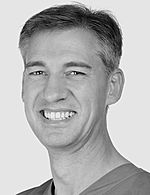 Wayne Williams has been an invited speaker to international conferences in 31 countries. He is the founder of the International Association for Dental Anaesthesia (IADA) and has been a clinical advisor to numerous medical and dental companies in Europe and the USA. Wayne has held positions as the International clinical director for Milestone Scientific Inc. (USA) and a lead clinical specialist at practices in Harley Street and the City of London. He has published scientific papers in numerous peer reviewed, international journals and was the recipient of the Colgate Prize for postgraduate research in 1998. Wayne received his post-graduate specialist degree with distinction, he is a member of the Council, Gerson Lehrman Group (USA) and has been the owner and lead clinical specialist at smile2o, a private dental centre in Wokingham, Berkshire, UK since 2004. Wayne Williams has been an invited speaker to international conferences in 31 countries. He is the founder of the International Association for Dental Anaesthesia (IADA) and has been a clinical advisor to numerous medical and dental companies in Europe and the USA. Wayne has held positions as the International clinical director for Milestone Scientific Inc. (USA) and a lead clinical specialist at practices in Harley Street and the City of London. He has published scientific papers in numerous peer reviewed, international journals and was the recipient of the Colgate Prize for postgraduate research in 1998. Wayne received his post-graduate specialist degree with distinction, he is a member of the Council, Gerson Lehrman Group (USA) and has been the owner and lead clinical specialist at smile2o, a private dental centre in Wokingham, Berkshire, UK since 2004.
Qualifications: BDS MChD |
| 09:35 to 10:00 |
Does Removal Of Hydrocarbons Caused By Biological Ageing Improve Osseointegration Of Dental Implants? Based on my MClinDent dissertation, strong evidence suggests hydrocarbon contamination plays a major role in reducing bio-reactivity of implant surfaces. This biological ageing of implant surfaces starts within 24 hours after implant manufacture and plateaus after 4 weeks. This occurs on all titanium and zirconia implants resulting in a drop in bio-reactivity of around 50%. Considering most implants are stored for longer than 4 weeks, contamination of implant surfaces is commonplace. Removal of hydrocarbon contamination massively upregulates integration speed and quality and may be used in the predictable integration of machine surfaced implants, and to improve integration outcomes for medically compromised patients.
Pavandeep Khaira 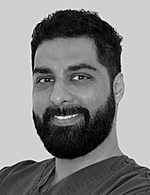 Pavandeep Khaira is an implant dentist and works from a number of sites including The Dental Implant Centre, Reading. Pav has extensive qualifications relating to implant dentistry attained in the UK and has also completed his externship in Implantology with Stony Brook University, New York. Pav qualified in 2002 from GKT and is passionate about learning and teaching. Pav has travelled internationally to learn from some of the very best surgeons and his commitment to enhancing and optimising results using systemic and local measures catches the attention and imagination of others. His broad and deep knowledge and passion to enhance care led him to investigate the effects of hydrocarbon contamination of implant surfaces and the subsequent impact on healing. He believes predictable integration of machine surfaced implants is possible, and an accelerated protocol could result in much shorter treatment times in select cases. Pavandeep Khaira is an implant dentist and works from a number of sites including The Dental Implant Centre, Reading. Pav has extensive qualifications relating to implant dentistry attained in the UK and has also completed his externship in Implantology with Stony Brook University, New York. Pav qualified in 2002 from GKT and is passionate about learning and teaching. Pav has travelled internationally to learn from some of the very best surgeons and his commitment to enhancing and optimising results using systemic and local measures catches the attention and imagination of others. His broad and deep knowledge and passion to enhance care led him to investigate the effects of hydrocarbon contamination of implant surfaces and the subsequent impact on healing. He believes predictable integration of machine surfaced implants is possible, and an accelerated protocol could result in much shorter treatment times in select cases.
Qualifications: BDS Externship in Implantology (New York) CertImplantDent DipImplantDent MClinDent Implantology with distinction |
| 10:00 to 10:25 |
The Elephant In The Room After an adverse soft tissue reaction to placement of a transmucosal abutment, research was carried out into the cause.
A survey showed that virtually no implant dentists (self included previously) are decontaminating these correctly. Various techniques were trialled and the results checked using S.E.M, the results being very interesting.
A proposed rethink and further research are strongly recommended.
Ray McNamara 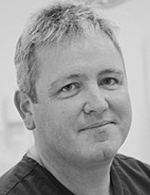 Ray McNamara qualified at Leeds in 1989, followed by a housejob in Cons/prosthetics. After six years as an Associate, he opened his first Chester practice and grew this to a five-surgery mixed practice which was sold in 2014. During this time postgraduate training in implantology and endodontics (often a contradictory skills mix) broadened horizons and now at his new practice referrals are taken from a wide variety of colleagues for implants, complex endo and cosmetics, including full-arch rehabilitation and some general dentistry. Ray McNamara qualified at Leeds in 1989, followed by a housejob in Cons/prosthetics. After six years as an Associate, he opened his first Chester practice and grew this to a five-surgery mixed practice which was sold in 2014. During this time postgraduate training in implantology and endodontics (often a contradictory skills mix) broadened horizons and now at his new practice referrals are taken from a wide variety of colleagues for implants, complex endo and cosmetics, including full-arch rehabilitation and some general dentistry.
Qualifications: BChD ( Leeds, 1989) PGCert Endod (Chester, 2012) |
| 10:25 to 10:40 |
Panel Discussion
|
| 10:40 to 11:00 |
Tea/Coffee & Exhibition
|
| 11:00 to 11:25 |
GBR Technique: Vertical And Horizontal Augmentation. Case Series Vertical and horizontal augmentation remains one of the most challenging techniques in treating a severely resorbed edentulous space. This is due to the demanding/complexity of the surgical procedure, lack of understanding of anatomy, surgical skills and potential complications.
Good knowledge of materials, patient selection, surgical technique and post-operative management are vital to success.
To gain predictable results in augmentation, it is important to maintain space to encourage clot stabilization, osteogenesis and preventing graft material to collapse. Advancement of soft tissue and closure also plays an important role in success.
In everyday implant practice it is common to see patients with mild to severe horizontal and vertical bone defects, single to multiple edentulous space.
I will discuss cases with single tooth to multiple missing teeth with horizontal and vertical hard and soft tissue defects. Treatment planning, diagnosis, classification of defects and treatment, surgical techniques and potential complications will be focused on.
Selvaraj Balaji 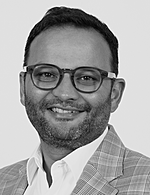 Since he obtained the BDS Degree, Selvaraj Balaji has worked in Maxillo facial units in the UK for several years and gained substantial experience in surgical dentistry. Since he obtained the BDS Degree, Selvaraj Balaji has worked in Maxillo facial units in the UK for several years and gained substantial experience in surgical dentistry.
For the past 11 years he has been working in his private dental practice which is based in Buckingham. At present his practice is predominantly focused on dental implants and Regeneration techniques.
He has placed a few thousand dental implants to date over the last 15 years. He has travelled around the world to develop his skills and worked with world-renowned implant surgeons. He completed TMJ and occlusion Curriculum with Peter Dawson in USA, Implant Curriculum with Dr Hilt Tatum, MFDS RCPS in Glasgow, MFDS RCS in Edinburgh, LDSRCS in London, Full Curriculum of Autogenous Bone Grating technique with Prof F Khoury in Germany and advanced surgical Master Curriculum Regenerative Implant Dentistry with Istvan Urban in Budapest.
He routinely mentor other dentists using the latest skills and techniques. Selvaraj Balaji has an enduring passion and commitment to his work, teaching and keeping up to date with the latest surgical innovations and research to ensure his patients are receiving the best possible care and his practice.
Qualifications: BDS LDSRCS (lon) MFGSRCPS (Gla) MFDSRCS (Ed) |
| 11:25 to 11:50 |
Synthetic Grafting Techniques And Outcomes A multiple case based presentation on the use of synthetic grafting materials. Its use in socket preservation, GBR in immediate and staged placements, sinus augmentation and treatment of peri implant defects. A guided approach on surgical access, debridement and manipulation of the material.
The importance of soft tissue management and soft tissue grafting to improve success.
Limitations and alternatives.
Andrew T Fish 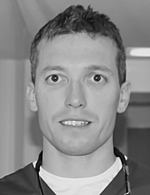 Andrew Fish is a dentist with a special interest in oral surgery and provision of dental implants. Andrew Fish is a dentist with a special interest in oral surgery and provision of dental implants.
Andrew graduated from the University of Glasgow in 2006.
He went on to do a two year speciality training programme at the Edinburgh Dental Institute, which involved rotations between different dental specialities and during this time he passed his MFDS examination. After GPT he worked as a member of the West of Scotland Oral and Maxillofacial team for two years. He continued within the speciality for a further two years in the North West of England.
He was appointed a Specialty Dentist in Oral Surgery and Restorative Dentistry at Manchester Dental Hospital in 2012.
He has been involved with dental implants since his GPT years and in addition to his hospital based hands on training, Andrew has completed the PGCert in Implantology. Andrew is an member of the British Association of Oral Surgeons and the ADI.
He is active in postgraduate education both in teaching and learning and draws upon many years of hospital based experience. Andrew is an Affiliate and Mentor at ICE (Implant Centres for Excellence, Manchester). He is also an Hon. Senior Clinical Lecturer in Oral Surgery and Implantology at Edge Hill University.
Andrew now lives in Jersey, Channel Islands and works three days a week in a private practice.
Qualifications: BDS MFDS RCS(Edin) PGCertImp |
| 11:50 to 12:15 |
Tooth Removal And Implant Placement Versus Pathology Removal And Tooth Preservation - A Cost Benefit Analysis When presented with teeth with large areas of apical pathology, the choices of removal of the tooth versus removal of the pathology will arise. Removing the pathology preserves the tooth and offers other benefits to the patient and the clinician. This presentation highlights the management of a 23-year-old female, who was given a plan to have teeth removed and replaced with implants, because the teeth had a large periapical cyst and a further complication from an attempted root canal therapy (RCT). An alternative plan was offered which involved enucleation, repair of the RCT complication and grafting of the large defect. 10 months post-operative records show significant improvement. The presentation also suggests criteria in support of removal of pathology instead of tooth removal in a cost-benefit analysis.
Irene Amrore 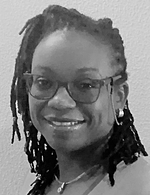 Irene Amrore is a General Dental Practitioner with a special interest in the field of Implant Dentistry. She has a desire to share knowledge and to help her do that effectively, she obtained a postgraduate Diploma in Medical Education with the University of Cardiff, Wales. Irene Amrore is a General Dental Practitioner with a special interest in the field of Implant Dentistry. She has a desire to share knowledge and to help her do that effectively, she obtained a postgraduate Diploma in Medical Education with the University of Cardiff, Wales.
Irene has been practising Implant Dentistry since 2004 and has a Masters Degree in this field. She has been involved in giving short lectures and mentoring in Nigeria since 2009. Although Irene enjoys placing implants, she also enjoys the restorative phase of implant dentistry as well as other advanced restorative work, Short Term Orthodontics and Aesthetic Dentistry in general. She incorporated extra-maxillary implants in her skill set in 2016. She enjoys documenting her work and using this for educational purposes and she is involved in organising peer group discussions among local colleagues.
Qualifications: BDS MSc Implant Dentistry MFGDP PGDME FHEA |
| 12:15 to 12:30 |
Panel Discussion
Moderator and preceding speakers
|
| 12:30 to 13:15 |
Lunch & Exhibition
|
| 13:15 to 13:45 |
AGM (in Room A)
|
| 13:45 to 14:10 |
FP1 vs FP3. Is It Time To Re-consider Our Approach To Full Arch Implantology? FP1 vs FP3. Full arch bridges with natural gum tissue vs full arch bridges with artificial gum tissue. For a long time, the way that we have thought about full arch restorations is in terms of the original all-on-4 protocol from Malo. This involves making the provisional and final restorations for full arch implant dentistry using pink prosthetic to replace the missing hard and soft tissue. In some cases, this involves the need for significant osteoplasty. Is it time that we assessed our cases to see of this tissue can be preserved and used, or even augmented before we remove it? Digital technology and tools that allow us to diagnose, plan and execute and review treatments in a way that we have never been able to before. Is it time to think of preservation? Augmentation? Precision placement?
Martin Wanendeya 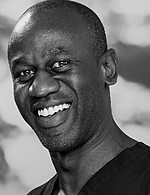 Martin Wanendeya graduated from the University of Bristol in 1995. Martin Wanendeya graduated from the University of Bristol in 1995.
Since 2004 he has been a partner at Ten Dental, an interdisciplinary specialist referral practice in Clapham, South London, where his work is limited to implant and aesthetic dentistry. He is a tutor on the diploma in implant dentistry program at the Royal College of Surgeons, England, having been awarded the diploma at advanced level.
He has a special interest on digital implant dentistry and digital smile design and has lectured internationally on all aspects of implant dentistry.
In his spare time he enjoys art, music and photography, and is a limited but keen skier.
Qualifications: BDS (Bristol) DipImpDent RCS ENG (Adv. Cert) |
| 14:10 to 14:35 |
Dental Implant Placement In Failed Single - Rooted vs Multi-Rooted Endodontic Sites - Results Of A Critical Appraisal Some studies suggest that placing dental implants in sites that have exhibited periapical pathology is contraindicated. However, this has not been conclusively determined. The literature on whether the number of roots of an endodontically failed site affect implant success and survival is sparse. Bone augmentation requirements and loading protocols may differ, due to the varying amount of bone loss occurring between the sites, amongst other factors. This critical appraisal investigates this question.
An electronic literature search was carried out in five databases along with hand searches. Five articles were selected for appraisal.
The literature is not of a high enough quality and therefore inconclusive when comparing the success of dental implants placed in failed single vs. multi-rooted endodontic sites. More specific research is needed to accurately answer this question, particularly focusing on the ideal socket preparation techniques prior to implant placement.
Emilie Baerts 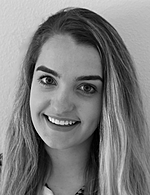 Emilie Baerts is a final year dental student at the University of Manchester. She is very interested in implant dentistry and has presented her Critically Appraised Topic in poster form at the conference in Edinburgh. She is working towards pursuing a career in Oral Surgery and wants her research to contribute to the future of implant dentistry. Emilie Baerts is a final year dental student at the University of Manchester. She is very interested in implant dentistry and has presented her Critically Appraised Topic in poster form at the conference in Edinburgh. She is working towards pursuing a career in Oral Surgery and wants her research to contribute to the future of implant dentistry.
|
| 14:35 to 15:00 |
Socket Shield – What Do We Know? In order to improve the outcomes of implant treatments in highly aesthetic areas and to prevent ridge collapse post extraction, a number of techniques have been proposed and developed over the years. More recently, the concept of ‘socket shield’ or ‘root membrane’ treatment has been growing in popularity, but has divided opinion. A literature review was undertaken and I will discuss my findings; starting with the concept and the advantages of the procedure, as well as looking at the different techniques described. I will cover the evidence in the literature, touching on the longitudinal studies and what is happening on a histology level. The known complications will also be discussed as well has how to avoid and manage them.
Yusuf Alshafi 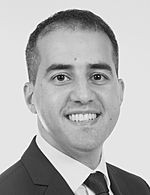 Yusuf Alshafi qualified from Guy’s, King’s and St Thomas’ Dental Institute in 2007 and spent a year as a Senior House Officer at Guy’s Hospital in the Oral Surgery and Restorative departments. More recently he has completed an MSc in implant dentistry with the thesis title: The Emerging Concept of Socket Shield. Over the last 10 years, he has completed numerous postgraduate courses in implant dentistry in the UK and internationally, which has helped develop his experience in the most advanced dental implant treatments and the latest techniques. Yusuf is currently working in multiple practices in London and the South East with the vast majority of his time dedicated to implant surgery and restoration. He has now mentored a number of dentists starting out in the field of implant dentistry and thoroughly enjoys teaching a subject he is passionate about. Yusuf Alshafi qualified from Guy’s, King’s and St Thomas’ Dental Institute in 2007 and spent a year as a Senior House Officer at Guy’s Hospital in the Oral Surgery and Restorative departments. More recently he has completed an MSc in implant dentistry with the thesis title: The Emerging Concept of Socket Shield. Over the last 10 years, he has completed numerous postgraduate courses in implant dentistry in the UK and internationally, which has helped develop his experience in the most advanced dental implant treatments and the latest techniques. Yusuf is currently working in multiple practices in London and the South East with the vast majority of his time dedicated to implant surgery and restoration. He has now mentored a number of dentists starting out in the field of implant dentistry and thoroughly enjoys teaching a subject he is passionate about.
Qualifications: BDS (Lond) MFDS RCSEd MSc (Implant Dentistry) |
| 15:00 to 15:15 |
Panel Discussion
|
| 15:15 to 15:30 |
Tea/Coffee & Exhibition
|
| 15:30 to 15:55 |
What Would You Do If...? We all come across the unexpected from time to time doing implant treatments. In this lecture, Bill will show you a number of cases that took him by surprise and you can see how he managed them. You will almost certainly not agree with everything he did, but perhaps it may help you in the future, if you ever encounter a similar situation yourself.
Bill Schaeffer 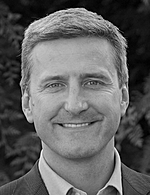 Bill Schaeffer is qualified in dentistry and medicine, has post-graduate qualifications in both dental and general surgery and is recognised as a specialist Oral Surgeon. He has been placing dental implants since 1996 and is experienced in a number of different implant systems. He is co-owner of two implant centres in Sussex, which focus purely on dental implant treatments. Bill is the South East England Committee representative and was Director of Education for the Association of Dental Implantology (2009-2011). Bill Schaeffer is qualified in dentistry and medicine, has post-graduate qualifications in both dental and general surgery and is recognised as a specialist Oral Surgeon. He has been placing dental implants since 1996 and is experienced in a number of different implant systems. He is co-owner of two implant centres in Sussex, which focus purely on dental implant treatments. Bill is the South East England Committee representative and was Director of Education for the Association of Dental Implantology (2009-2011).
Qualifications: BDS MBBS FDS RCS Eng MRCS Eng |
| 15:55 to 16:20 |
Your Worst Nightmare This case study is a chastising case that is very unusual and a warning to us all.
The case presented with a failing root treated lower first molar (46) with a periapical lesion.
The molar was removed along with the periapical cyst and an immediate placement of a dental implant along with bone augmentation was carried out. Healing was uneventful due to the extent of augmentation, the implant was allowed to heal for a period of 6 months. The implant was restored and after a period of three months the pt returned with infection in the area and the implant and bone graft was removed. The area did not heal and the 47 was then removed and a further curettage carried out with no healing. The 45 and 44 were then removed and biopsies carried out which were inconclusive. No healing. Patient then treated for Osteomyelitis with extensive curettage and long term IV antibiotics with PIK line. No resolution resulting in mandibular section and removal of mandible and fibular graft. The surgery involving complex digital imaging and planning described.
Jatin Desai 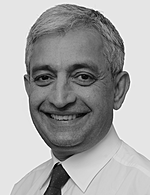 Jatin Desai qualified from The University of Bombay in 1979 and worked in several hospitals in the UK in Oral and Maxillo Facial Surgery when he acquired the FDSRCS qualification from the Royal College of Surgeons England. Jatin Desai qualified from The University of Bombay in 1979 and worked in several hospitals in the UK in Oral and Maxillo Facial Surgery when he acquired the FDSRCS qualification from the Royal College of Surgeons England.
He set up his own Dental Practice that has grown into a multi-specialty private practice at Reading in Berkshire accepting referrals. He provides dental implant treatment exclusively and uses multiple systems and provides all aspects of dental implant dentistry including bone augmentation and sinus graft surgery.
He is an ex-President of the AOG, Media and Parliamentary representative in Berkshire for the BDA and an ex Postgraduate Tutor for Berkshire. He is involved in the teaching of Implant Dentistry and has now partnered his practice with the Dentex Health Care group. He continues to provide implant treatment on referral and is also now able to spend more time playing golf badly.
Qualifications: BDS FDSRCS (Eng.) |
| 16:20 to 16:45 |
Righting Some Wrongs. The Removal And Replacement Of Failing Dental Implants A patient attended the clinic requesting a second opinion regarding her implant supported bridge. She had implants in the UR4 and UR6 positions to support a bridge replacing the UR4, UR5 and UR6. The patient had been told that the outcome of her treatment whilst not perfect was acceptable. Our professional opinion was different. Existing implants were removed and then the case was retreated. Owing to the nature of previously removed implants the case was complex but we will share how we managed this case in terms of timing, hard and soft tissue management and a restoratively driven treatment plan.
Paul John Swanson 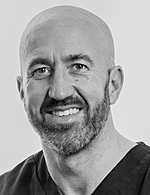 Paul Swanson qualified from the University of Liverpool in 2000. He completed his MFGDP qualification in 2003 and a Post Graduate Certificate in Conscious Sedation in 2004. In 2008, he received the Diploma in Implant Dentistry from the Royal College of Surgeons of England and the Advanced Certificate in Bone Grafting. In 2011, he received a Master of Science degree in Implant Dentistry from Queen Mary University of London. Over the last 10 years, the volume and complexity of cases has naturally increased. Paul’s clinical practice is limited to Implant Dentistry. He owns a specialist referral practice in Liverpool and contributes to the multidisciplinary cases done by his team. He mentors dentists at both entry level and advanced implant dentistry and contributes to study clubs in his region. Paul is a Tutor for the Royal College of Surgeons Diploma in Implant Dentistry. He is the ITI Study Club Director for Liverpool and is the co-director of IDEAL - an organisation running dental courses for all members of the dental team. Paul Swanson qualified from the University of Liverpool in 2000. He completed his MFGDP qualification in 2003 and a Post Graduate Certificate in Conscious Sedation in 2004. In 2008, he received the Diploma in Implant Dentistry from the Royal College of Surgeons of England and the Advanced Certificate in Bone Grafting. In 2011, he received a Master of Science degree in Implant Dentistry from Queen Mary University of London. Over the last 10 years, the volume and complexity of cases has naturally increased. Paul’s clinical practice is limited to Implant Dentistry. He owns a specialist referral practice in Liverpool and contributes to the multidisciplinary cases done by his team. He mentors dentists at both entry level and advanced implant dentistry and contributes to study clubs in his region. Paul is a Tutor for the Royal College of Surgeons Diploma in Implant Dentistry. He is the ITI Study Club Director for Liverpool and is the co-director of IDEAL - an organisation running dental courses for all members of the dental team.
Qualifications: BDS MFGDPUK DipImpDentRCSEng MSc (Implant) |
| 16:45 to 17:00 |
Panel Discussion
|
| 17:00 |
Close, followed by Drinks Reception
|